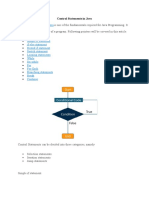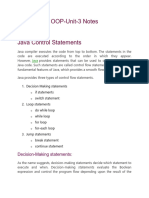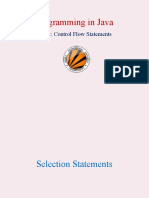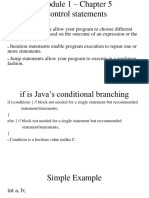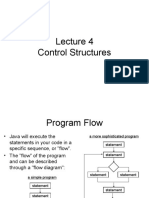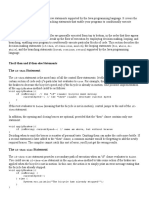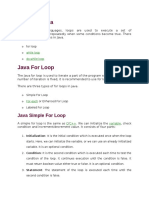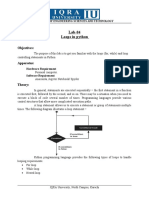0% found this document useful (0 votes)
113 views10 pagesSession-4 - Control Statements
The document outlines the agenda for Session 4 which includes recapping Session 3, discussing a quiz, covering control statements, and demonstrating programs using control statements. It then provides explanations and examples of different Java control statements such as if/else, switch, while, do-while, for loops, and jump statements like break, continue, and return. Finally, it lists several programming problems to demonstrate control statements in hands-on coding examples.
Uploaded by
andrajub4uCopyright
© © All Rights Reserved
We take content rights seriously. If you suspect this is your content, claim it here.
Available Formats
Download as PDF, TXT or read online on Scribd
0% found this document useful (0 votes)
113 views10 pagesSession-4 - Control Statements
The document outlines the agenda for Session 4 which includes recapping Session 3, discussing a quiz, covering control statements, and demonstrating programs using control statements. It then provides explanations and examples of different Java control statements such as if/else, switch, while, do-while, for loops, and jump statements like break, continue, and return. Finally, it lists several programming problems to demonstrate control statements in hands-on coding examples.
Uploaded by
andrajub4uCopyright
© © All Rights Reserved
We take content rights seriously. If you suspect this is your content, claim it here.
Available Formats
Download as PDF, TXT or read online on Scribd
/ 10


































